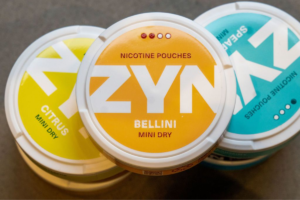The potential health effects of snus, a smokeless tobacco product, have been widely discussed. Several negative health outcomes have been linked to the use of snus according to science. It is worth noting that this substance has high addictive properties as well as dangerous after-effects . Moreover, studies indicate that people who consume snus are more likely to develop different types of cancer such as pancreas cancer and oesophagus cancer. Popular belief may hold that comparing cigarette smoking with dipping tobacco like snuff gives better odds for life but this is wrong; in fact it might even be harmful because many anti-smoking campaigns could fail if they take a cue from here and urge smokers swap one habit for another
Understanding Swedish Snus and Its Rising Popularity
What is Swedish Snus?
Swedish Snus, which can be traced back to the early 19th century in Sweden, is a moist smokeless tobacco product traditionally put under the upper lip. During its production process it is pasteurized unlike many other forms of smokeless tobacco products; this step proponents claim could decrease levels of tobacco-specific nitrosamines (TSNAs), a class of known carcinogens.
Historical Perspective on Snus in Sweden
The historical context of snus usage within Sweden dates back over two hundred years where it started off as being luxurious before becoming more common during the 1800s when industrialization brought about improvements in its manufacture and availability thereby increasing its use among people . Over time despite intermittent public health concerns arising out from changed patterns surrounding tobacco consumption throughout the 20th century, snus has always remained deeply rooted within Swedish traditions.
Prevalence Among Swedish Men and Public Health in Sweden
Prevalence among Swedish men: According to statistics there are high numbers who use snus among swedish males with estimates ranging from around 20%-30%. This makes it one among globally leading smokeless tobacco products by volume consumed per capita for any country worldwide.
Public health implications: In light of these findings different arguments have been put forward considering public health implications associated with widespread snuff taking habits especially so when seen against low levels of smoking found in sweden that rank among europe’s lowest rates. Such debates revolve around whether or not snuff could act as a harm reduction alternative vis-a-vis cigarette smoking. However, health professionals remain worried about risks tied to cancers and cardiovascular ailments related to chewing tobacco like snus even as they continue grappling with how best balance between harms vs potential benefits within their population when it comes to quitting or cutting down on smoking using such methods.
Given this background knowledge regarding utilization history and current situation vis-à-vis public wellness; understanding both past events and present realities would be pivotal towards achieving comprehensive anti-tobacco initiatives. While there is often argumentation around snuffing being safer than smoking, the fact remains that health risks associated with its consumption are still too many to ignore.
Exploring the Link Between Snus Use and Cancer
Connection of Snus Usage With Cancer
The scientific world has conducted several studies to examine the relationship between snus usage and cancer. The key areas of concern are mouth cancer and pancreatic cancer, both of which are highly relevant considering how the snus is used and its chemical components.
Research on Snus Use and Mouth Cancer
Numerous researches have been carried out to explore whether or not there exists a link between snus consumption and an increased risk for developing oral cancers. However findings have been inconclusive; some studies suggest that long-term users may face slightly higher chances while others say no such thing can happen at all. It is believed by those who think so that direct contact over time with mucous membranes in the mouth could give rise to carcinogenic effects eventually as opposed to being related only because certain chemicals found within this product come into direct contact with carcinogens thereby making it more dangerous than smoking any kind tobacco. Duration of use, frequency of use, types of specific carcinogens contained in different products among other factors formed part important parameters considered during these investigations but still risk was minimal compared with traditional cigarettes.
Snus Consumption And Risk For Pancreatic Cancer
The connection between using snuff pouches or loose powder tobacco known as “snuffs” which were placed under upper lip against gum where it remains moistened through saliva secretion then absorbed into bloodstream causing various health problems including cancer mostly affecting pancreas area has also attracted attention from scientists. According Swedish epidemiological study conducted over period ranging 10-20 years there seems be positive relationship between duration smokeless nicotine exposure such stored inside cheek cells lining inner surface – therefore increasing chances getting infected with malignant cells leading development tumors on organs like pancreas among others associated risk Factors include levels concentration nicotine other harmful substances contained within each packet size consumed daily routine followed during consumption lifetime habits i.e whether one spit swallow after each pinch taken etcetera overall lifestyle adopted genetic predisposition towards contracting cancer so forth. But one must understand that there is some proof to back up a correlation while still relatively low increase in risk thus need for more investigations into these areas.
In summary, it can be said that snus usage does not pose as high of a risk to an individual’s health when compared with smoking. However healthcare providers should inform patients about the potential dangers associated with this type of tobacco use and encourage them to think through whether or not its benefits outweigh such hazards particularly if they are trying reduce harm caused by their habit
Snus Use Vs. Smoking: A Harm Reduction Perspective
From a harm reduction perspective, comparing the health risks of snus to those of cigarettes reveals some important considerations. Firstly, snus, being a smokeless tobacco product, does not expose the user or those around them to harmful combustion products found in cigarette smoke. This key difference significantly reduces the risk of lung cancer and other respiratory illnesses associated with smoking.
Analyzing the Part of Snus in Smoking Cessation
Some cigarette smokers have seen snus as a potential tool for quitting smoking due to its delivery of nicotine minus the effects associated with smoking tobacco. The explanation is as given:
- Nicotine Satisfaction: Snus can satisfy one’s cravings for nicotine without having to inhale smoke from cigarettes.
- Behavioral Element: Substituting oral fixation through the use of snus might help manage those parts of addiction that are habitual or routine-like.
- Reduced Harm: Switching from cigars to snuffs limits a person’s exposure levels towards toxicants produced by combustion processes.
Snuff in Harm Reduction Strategies
In harm reduction strategies, smokeless tobacco such as snuff plays an important role because it:
- Has Lower Risks Associated With It: According to what we currently know scientifically, chewing tobacco has less chances of causing cancer or respiratory diseases compared to smoked products like cigarettes.
- Affects Public Health: When individuals who smoke start using chewing stuffs instead; they could minimize overall damage to people around them and society at large since these substances pose lower risks.
- Control over Quality and Regulations: Ensuring good manufacturing practices (GMP) followed during production together with clear labeling on packages containing chewing materials will help reduce health hazards among users through informing them about what is inside those packs besides any likely danger involved.
To sum up, though not risk-free, snuff could be a better option than other forms when it comes down to harm reduction strategy especially if used as an alternative way rather than smoking. However, more studies need be conducted into long term effects associated with its usage while ensuring evidence based intervention approaches within this field are adopted continuously.
The Debate: Can Snus Cause Cancer Directly?
Investigating Cohort Studies of Cancer Risk and Snus Usage
Cohort studies have been widely used to investigate the relationship between snus usage and cancer. In this kind of research, large numbers of people are monitored over extended periods for their habit of using snuff, among other factors, and for any subsequent incidences of cancer. Usually, such surveys show that although individuals who use snuf may not be at a higher risk than cigarette smokers in general when it comes to contracting cancer types overall; certain dangers cannot be ignored altogether.
The Relationship Between Former Snus Users And Cancer Risks
Looking into health outcomes among ex-chewers sheds light on what happens with long-term exposure to risk from chewing tobacco. It is interesting to note that some studies have found a decline in the chances of getting cancer after quitting chew over a number of years. This suggests that there might be something reversible about this particular hazard; especially those cancers associated closely with smoking like oropharyngeal and pancreatic cancers.
Nicotine Controversy And Carcinogenicity
There are many different sides to the argument about whether nicotine causes cancer or not. For one thing, it has never been proved scientifically that nicotine alone can cause malignant tumors in humans. However; its ability to accelerate growth in existing cells which are already cancerous as well as relation with cardiovascular diseases remains points for concern among researchers involved with oncology issues related to this compound. Moreover discussions often revolve around such aspects as:
- Biological effects :Investigating how nicotine affects cellular mechanisms within an organism’s body systems while paying attention mainly towards its possible roles played during proliferation angiogenesis (new blood vessel formation).
- Addiction potential:Establishing whether addictive qualities attributed unto Nicotine might lead individuals into prolonged periods where they would continue using tobacco products thereby exposing themselves even further towards various carcinogens contained therein.
- Differentiating Pure Nicotine Exposure From Tobacco Related Hazards: Showing disparity between risks posed by exposure to only nicotine itself vis-à-vis those associated with consumption of cigarettes which have many other dangerous chemicals besides.
In summary, some risks are related to using snuff but evidence indicates that compared with regular smoking, the chances of getting cancer from snus are much lower. On going research and high quality cohort studies will help us better understand what happens over time in terms of cancer development among people who use tobacco both alone or combined with nicotine.
Challenges in Quitting Snus and Overcoming Nicotine Addiction
Nicotine in Snus Products’ Impacts
Stimulation of the central nervous system leading to increased vigilance and reduced stress is among the effects associated with nicotine which is a chemical constituent of snus. However, it’s crucial to know what else this means:
- Addictiveness: Nicotine has a high addictive potential hence quitting the use of snuff can be very difficult for an individual. This reliance is caused by the discharge of dopamine – a neurotransmitter linked with pleasure as well as reward systems in our brains.
- Cardiovascular Dangers: Although cancer risks are lower when using snus than smoking cigarettes, there are still significant dangers posed by nicotine on heart rate and blood pressure levels.
- Effects During Pregnancy and Adolescence: Using nicotine while pregnant may result into negative outcomes such as preterm delivery or giving birth to underweight infants; but for teenagers it interferes with brain development due to their exposure to this chemical substance.
Strategies for Tobacco Cessation among Snus Users
The following are some ways that can help one quit chewing tobacco which includes dealing with physical addiction towards nicotine alongside behavioral patterns surrounding snuff use:
- Nicotine Replacement Therapy (NRT): These products provide controlled doses of nicotine through patches, gums or lozenges without any harmful toxins found in these smokeless tobacco brands thereby helping manage withdrawal symptoms during cessation process.
- Behavioral Therapies: Counseling programs or joining support groups could be useful in self-identification & modification of behaviors related to dipping i.e., ‘spit’.
- Prescription Drugs: Cravings can be reduced together with other withdrawal symptoms thus making it easier for individuals struggling to stop usage by using certain types of medicines recommended by doctors.
- Creating an Abstain Plan: Deciding on when exactly you want all this quitted forever plus identifying situations that trigger your urge most will greatly assist us prepare adequately ourselves both mentally and emotionally against such challenging times aheads while trying so hard to quit forever.
Snus Health Risks and Tips for Quitting
Although smokeless tobacco is advertised as a safer option than smoking, there are still hazards involved:
- Oral Problems: Extended use of snuff can lead to tooth decay and gum diseases
- Nicotine Dependency: One can easily get hooked onto nicotine contained in these products thus finding it difficult to quit dipping altogether.
- Potential for Cardiovascular Diseases: The presence of nictoine raises ones’ chances of getting heart related problems significantly like those seen among smokers who puff cigars or cigarettes regularly for long periods.
Advice on How To Stop:
- Professional Assistance : It is advisable that you seek help from healthcare professionals who may provide personalized advice according to your situation while also giving necessary support throughout this process.
- Useful Tools Towards Quitting : There exist many resources such as hotlines which one could call when they need help with quitting snuff. Many other tools are available too.
- Stay Educated :Getting knowledge about risks associated with dipper use can act as a great motivator towards abstinence. This means you have no choice but educate yourself more so that all information pertaining to smokeless tobacco becomes clear thereby making it easier for yourself never again want anything do with them until end time arrives where nothing else matters except death itself comes knocking at our doorssteps uninvited.
In order to successfully stop using snus and overcome addiction, an individual needs both physiological support (medical) along side mental strength (counseling).
Looking Ahead: Snus Use, Regulation, and Public Health Policy
Snus’ implications stretch far into public health policy and this is especially so in Sweden where it has been a traditional favorite and other countries witnessing an increase in usage. There are unique challenges posed by snus and other smokeless tobacco products from a regulatory perspective:
- Health Risk Assessment: It is important to have reliable scientific studies that can help in accurately determining the risks related to the use of snus. This involves understanding its effects on oral health over time, cardiovascular diseases as well as nicotine dependence.
- Product Regulation: They should be able to meet certain standards when it comes to production methods, packaging materials used or even sales locations so as not only reduce but also prevent any harm caused by them on human beings. This includes controlling levels of addiction causing substances like nicotine among others.
- Restrictions In Marketing And Sales: Putting limitations on how these items are advertised or sold such that they do not become attractive among non users especially young people thus lowering the number who start using them initially.
- Campaigns For Public Awareness: Educating members of the public about dangers associated with this product, for instance, its potentiality in causing addiction problems through nicotine.
Future Research Directions On Health Outcomes Resulting From Snus Use
To effectively inform policies meant to protect people’s health within public settings there should be further investigations carried out in different areas such as:
- Comparative Risk Assessment: Studies which compare risks brought about by smoking cigarettes vis-a-vis chewing pipe tobacco etcetera could assist place snus within wider framework for reducing harm from tobacco use.
- Longitudinal Health Effects: Following up users overtime so as to get more information concerning what might be long term consequences of utilizing snuff including but not limited cancer development, heart attacks among others.
- Behavioral Studies: Looking into various behavioral patterns linked with consumption like initiation rates; duality involving two types or more different brands during quitting moments – which method works best?
- Impact Of Regulations : Evaluating how existing rules influence trends within markets where these commodities are sold as well their consumption levels. Also exploring outcomes related with public health due to policy implementation.
By dealing with each one of these points systematically, decision makers will come up with better strategies of handling smokeless tobacco products like snus in such a way that they protect the lives of people while at the same time considering cultural diversities.
References
1. Norwegian Institute of Public Health – “Health risks from snus use”
- Source URL: Health risks from snus use
Summary: This authoritative source from the Norwegian Institute of Public Health offers a comprehensive overview of the health risks associated with snus use. It meticulously details the correlation between snus consumption and various health issues such as cancer, cardiovascular disease, mental disorders, type 2 diabetes, obesity, and metabolic syndrome. The document is grounded in extensive research, making it a valuable resource for understanding the broader public health implications of snus. Its credibility is bolstered by its publication by a national public health institution, ensuring the information is both accurate and relevant.
2. The New York Times – “Can Nicotine Pouches Like Zyn Harm Your Health?”
- Source URL: Can Nicotine Pouches Like Zyn Harm Your Health?
Summary: This article in The New York Times explores the health risks associated with nicotine pouches, including products like Zyn, which are similar to snus. While it acknowledges the differences between smoking cigarettes and using snus or nicotine pouches, it highlights concerns about the potential for gastrointestinal cancers and other health risks. This piece provides a journalistic perspective on the issue, offering insights from various health experts and researchers. Its inclusion of expert opinions and its publication in a reputable newspaper make it a credible and informative source for readers seeking to understand the nuances of snus-related health risks.
3. PubMed Central (PMC) – “Effect of smokeless tobacco (snus) on smoking and public health in Sweden”
Summary: This academic article published on PubMed Central delves into the impact of snus on smoking prevalence and public health in Sweden. It presents a nuanced view, recognizing snus as dependence-forming but noting its lack of association with cancer or respiratory diseases. However, it mentions potential increases in cardiovascular risks. This source stands out for its detailed examination of snus’s role in Swedish society and its effects on public health, backed by scientific evidence. Its publication on a respected database like PMC ensures its reliability and relevance for readers interested in the scientific aspects of snus use and its implications.
Frequently Asked Questions
Q: What is snus and how is it used?
A: Snus is a smokeless tobacco product that originated in Sweden. It is usually placed under the upper lip for extended periods of time.
Q: Is snus a safer alternative to cigarettes?
A: Some studies suggest that snus may pose fewer health risks compared to smoking cigarettes, as it eliminates the harmful effects of tobacco smoke. However, snus still contains nicotine and other harmful chemicals.
Q: Are there any health risks associated with snus use?
A: The use of snus has been linked to certain health risks, including an increased risk of pancreatic cancer and cancer of the oesophagus.
Q: Can snus users switch from cigarettes to snus?
A: Snus is sometimes used as a way for smokers to transition away from cigarette smoking. However, it is important to note that snus still contains addictive substances and health risks.
Q: What does epidemiological evidence say about snus and health effects?
A: Studies have shown mixed results when it comes to the health effects of snus use. Some research suggests potential risks, while others indicate potential benefits compared to smoking.
Q: Is snus popular in certain regions?
A: Snus is particularly popular in Scandinavian countries like Sweden and Norway, where it has been a traditional form of tobacco use for centuries.
Q: Are there any studies investigating former snus users?
A: Research has also looked into the health outcomes of former snus users, with some studies suggesting a decreased risk of certain health issues after quitting snus.
Recommended Reading :Snus Nicotine














